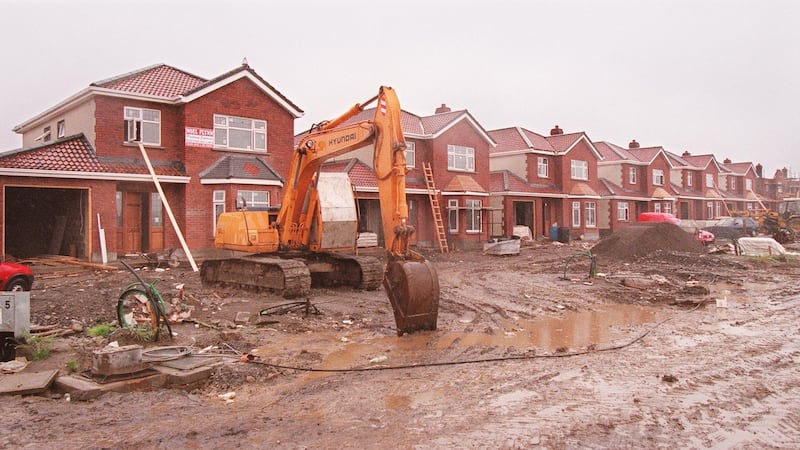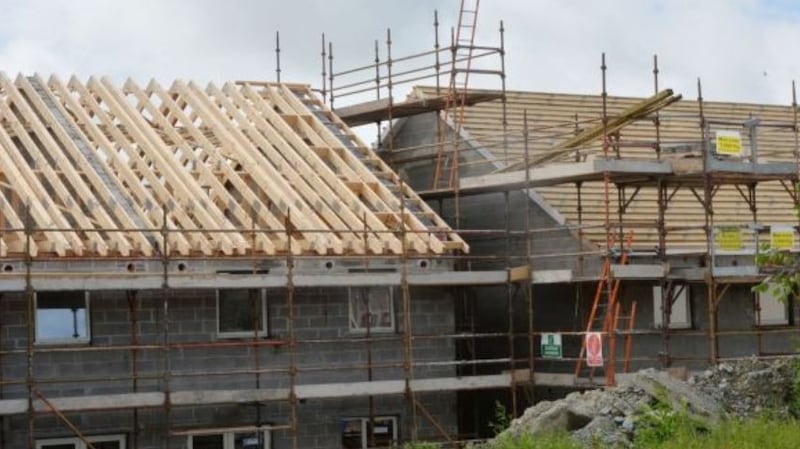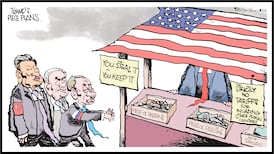A clash is brewing between the Central Bank and the Government over the competing objectives of financial stability and home ownership. Many would argue that these two goals – managing risk in the financial system and promoting buying over renting – have little to do with each other. But they do. That's because mortgage rules – which were designed to protect the banking system – have successfully limited how many people can reasonably aspire to owning a home. But those limits have set the level of home ownership below where the Government – and, ultimately, voters – would like it to be. Ironically, the effectiveness of the Central Bank is stopping the Government from executing its own housing policy.
Officially, the Government has endorsed a position of tenure-neutrality in housing since 2011. However, there is, in fact, a preference towards home ownership. As the Taoiseach himself said in a Dáil speech in April, the Government is "absolutely committed to doing everything we can to increase home ownership". Subsidy programmes for first-time buyers such as Help-to-Buy and the affordable loan scheme bear this out. And the public supports this approach. A survey published by the Department of Finance earlier this year revealed that 87 per cent had a strong preference for home ownership.

Despite this, home ownership rates continue to fall and the stock of homes for sale is growing even as housebuilding remains substantially below estimates of housing demand. Goodbody estimates that 2,500 more properties have been built than sold over the past 12 months. What exactly is going on?
Affordability appears to be at the heart of the problem. The CSO published data last week showing that median gross household income in the State in 2016 amounted to a little over €45,000 – ranging from €32,000 in Donegal to €66,000 in Dún Laoghaire-Rathdown. If these representative households were able to raise a deposit of 10 per cent, the maximum price that they could afford to pay under the Central Bank limit of 3.5x gross income would be just €125,000 and €257,000, respectively. Yet actual transacted prices for new homes in these areas are €150,000 and €610,000 over the past year. Nationally, the median new home price is €344,000. Allowing for wage growth over the period since 2016, this currently amounts to about seven times gross household income – or twice the Central Bank limit.
Income distributions
These statistics represent the median household, but income distributions can also be instructive in terms of assessing the affordability of the new housing stock. We calculate that even for two-income couples earning more than €50,000 per year each, almost 60 per cent can afford to buy a home worth only €290,000. Only one-third of new homes sold in 2018 were below this price.
So why is the building industry producing homes at prices that most of the population cannot afford? In some cases, developers may have simply misjudged the market. But there is clearly a mismatch between the minimum delivery price of a new home and the income levels of most of the population. That brings us into the realm of public policy. Government involvement in the housing market may be undesirable in a perfect world but it is often necessary in the real world. There are three ways to resolve this situation, some more preferable than others.
There is a mismatch between the minimum delivery price of a new home and the income levels of most of the population
First, the Central Bank could ease its mortgage rules, thus increasing the amount that buyers are able to pay. This would be a retrograde step. The costs of excess leverage over the past decade since the banking crisis have been enormous, both to individuals and the State. The characteristics of Ireland’s small, open economy make Irish households more vulnerable to income shocks that can trigger mortgage difficulties. So, the Central Bank is right to insist on a mortgage regime that is stricter than that which applies in the UK, for instance.

Second, the government could employ further supply-side efforts to drive down the price of delivering new homes. This has been the strategy in recent years. Some of the policy efforts have been laudable, including the introduction of the vacant site levy, the fast-track planning process and the Land Development Agency (LDA). As highlighted by the Economic and Social Research Institute, the vacant site levy rules need to be tightened to have maximum effect.
Price limits
Third, demand-side measures – often frowned upon because of the risk of windfall profits to landowners – can be part of the package. To manage the risk of the benefits accruing to landowners, strict price limits must be placed on any new measures. The upper limit of €500,000 on the Help-to-Buy scheme was arguably overly generous. That scheme is due to end on December 31st, 2019. Combined with the growing stock of unsold homes, this creates a real risk that builders will curtail their supply plans sharply over the coming years, exacerbating the housing shortage.
There is a real risk builders will curtail their supply plans sharply over the coming years, exacerbating the shortage
The Government should take the opportunity to reduce the upper price limit on the scheme to incentivise construction at prices that a larger number of households can afford. An enhanced system of shared ownership should also be examined where the Government retains ownership of part of the home, thus reducing the price payable by the homeowner. Such a scheme is already in train using State lands and has seen significant demand.
The Government may indeed decide to do nothing and simply accept a higher proportion of people in rental accommodation. However, this does not look likely or indeed acceptable to the wider public. Given that the Central Bank’s mortgage policies remain both necessary and effective, the solution must come from somewhere else. Using government incentives to improve supply at the affordable end of the market while supporting the buying power of households to achieve home ownership should help resolve the tension between macroprudential regulation and housing policy.
Dermot O’Leary is chief economist with Goodbody












